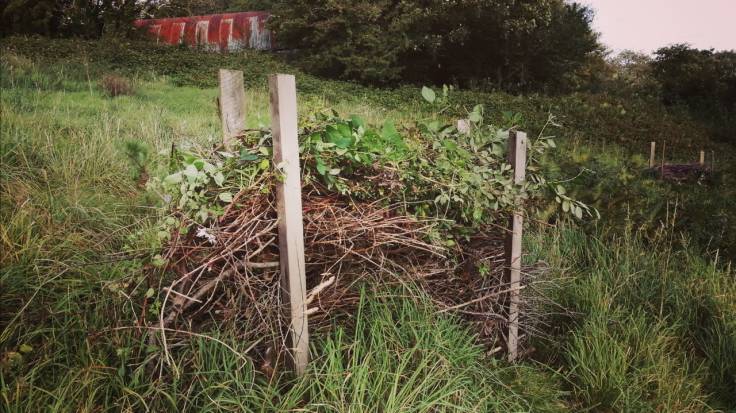
Cornus stolonifera 'Flaviramea' windbreak hedge by the polytunnel
Protection is critical in the forest garden and windbreaks provide habitat and food as well as protection from the wind.
Windbreaks are essential for protecting plants in the forest garden. There is always a balance to be struck between protection and sunlight. Generally, plant the tallest windbreak to the north, less tall to the east and the shortest on the south and west.
If you can afford the space, plant a double thickness hedge, and try to avoid gaps by using baffles or overlapping hedges.
The protection offered is about 8 times the height of the hedge eg a 5m hedge protects about 40m into the garden.
Species
To support wildlife, plant native where you can. Here are some that work well:
- Guelder Rose
- Sea Buckthorn
- Common Barberry
- Hawthorn
- Hazel
- Holly
- Wild Privet
- Alder Buckthorn
- Purging Buckthorn
And these are some non-natives:
If you have the time, buy a few cultivars of your hedging plant and propagate them from cuttings. This is a cheap way to have a hedge that fruits well. See the sortable Forest Garden Spreadsheet for more windbreak species suggestions.
Dead hedges

An old dead hedge with newly added material
Use dead hedges in front of specimen trees, by the time they decompose, the windbreak hedge will have become established.
The benefits of a dead hedge, made from cut branches and foliage are:
- Temporary windbreak shelter for young plants
- Habitat and food source for wildlife
- A place for surplus cuttings rather a bonfire
- Put Bindweed, Bramble & Bitter Dock roots on top to dry out
They are simple to make: put posts (preferably Larch or Sweet Chestnut as last longer) in pre-made holes with a post hammer and pile up the branches inbetween the posts.